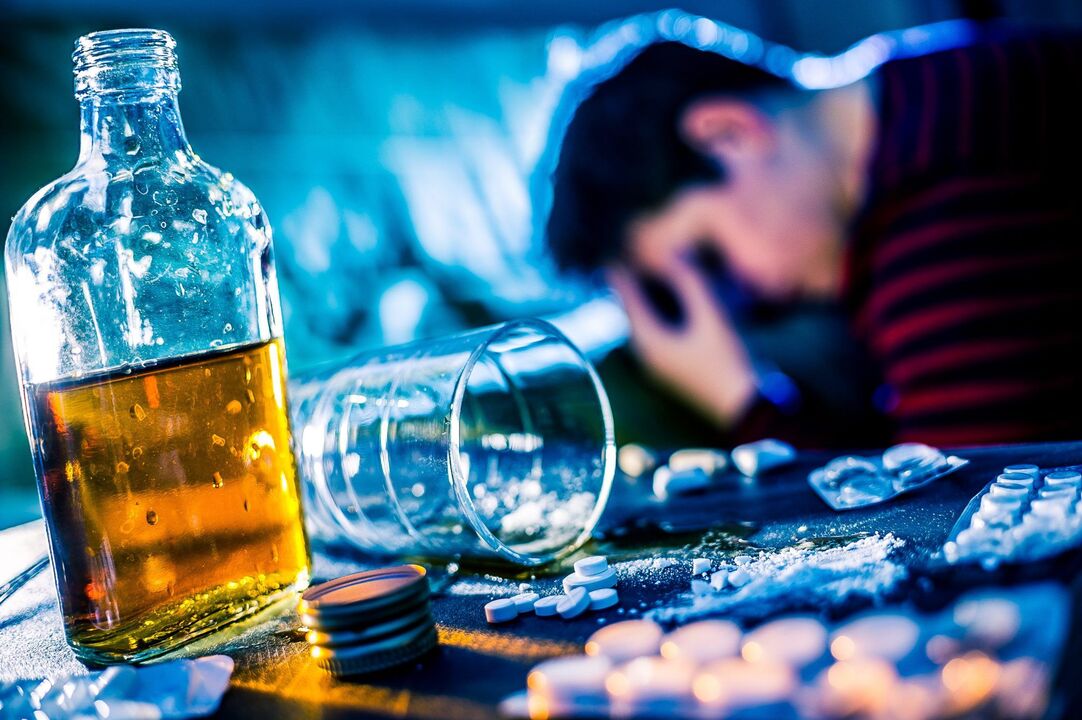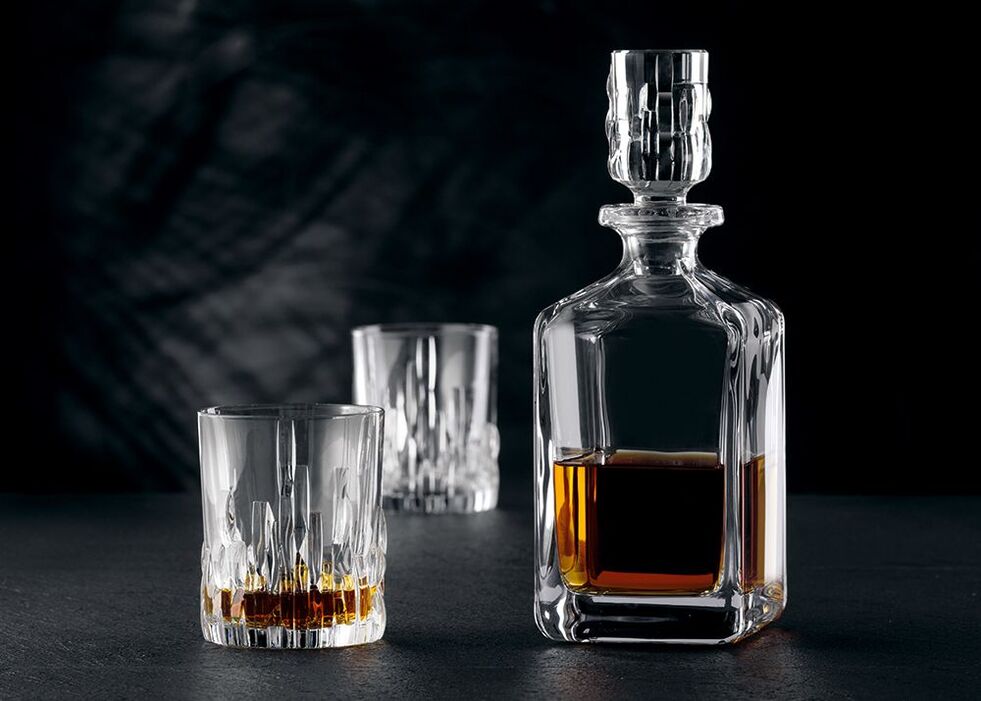Almost no vacation is complete without alcohol. But everything should be in moderation, a small amount of alcoholic beverages will benefit and lift your spirits. Some types of alcohol are safer than others. The main thing is that they do not contain methyl alcohol, as it leads to disastrous consequences.
Classification of dangerous levels of alcohol
Any food product containing at least 1. 5% ethyl alcohol is alcohol. Ethanol beverages are systematized according to C₂H₅OH level, type of raw material used, type of production and aging criteria.
Due to the presence of alcohol:
- low content - beer, wine;
- tall - vodka, cane rum, gin, grain whiskey, grape brandy and more.
All drinks are produced from a variety of raw materials.
The first ones can be divided into the following
- made from grapes - Italian cognac, wine, grappa;
- cereals – whiskey, beer group, vodka;
- fruits and berries – Calvados apples, liqueurs, liqueurs;
- herbs - myrrh, rum, Mexican tequila, absinthe.
Each alcoholic beverage product has its own ethanol content.
The presence of the latter can be divided as follows:
- high – from 67 to 96% of container volume;
- normal – from 31 to 66;
- average – from 9 to 30;
- low – from 1. 5 to 9.
The final line includes everyone's favorite beer, low-alcohol national products, kvass, palm toddy, shandy.
Drinks with an average ethanol content are represented by wine, mulled wine, punch and mead.
The top tier is vodka, armagnac, tequila, rum, absinthe and other intoxicating liquids. Drinking ethyl alcohol is at the forefront. Alcohol content reaches 95%.
It is believed that the main harm to health is due to the strength of the drink, however, the consumption of products containing weak alcohol can cause no less damage than strong alcohol.
Characteristics of less toxic alcohol
Reviews about intoxicating liquid vary widely. Some nutritionists believe that drinking the drink is beneficial, while others believe that it is harmful to health.
The criteria for least harmful alcohol are as follows:
- Its quality level.
- Amount of ethanol.
- Add flavoring.
- Efficiency.
According to medical experts, vodka is considered less harmful to health. Of course, this condition is met with minimal use.
This conclusion is due to the following factors:
- low calorie content;
- no harmful carbonyl groups;
- the simplicity of alcoholic liquids - alcoholic water.
A high-quality product consumed almost never causes a hangover. But this does not mean that you can drink vodka without measuring. To prevent poisoning, snacks should be fatty foods.
However, experts describe genuine grape wine as the least safe for the liver. The berries of the bush do not have harmful residues. If you do not separate the skin from the berries, you will get a variety of red wines, which are recognized as the healthiest.
This is because the vitamins contained in the peel enter the liquid alcohol medium, saturating the body with trace elements and organic nitrogen compounds.

Antioxidants improve the function of the circulatory system and rejuvenate cells. Wine is successfully used to extract an extract from it, which is used for injections and various cosmetics.
Negative impact on the human body

The negative effects of alcoholic beverages are expressed as follows:
Organs exposed to alcohol and diseases that may occur due to the effects of alcoholic beverages
- Poisoning disrupts the flow of oxygen to the brain, causing brain cells to die. Encephalopathy develops, irreversible changes occur.
- The cardiovascular system is affected. Pathologies develop: ischemia and hypertension, cardiomyopathy. In some people, alcoholism causes the heart to become enlarged.
- The breathing rate increases, tuberculosis and chronic bronchitis develop.
- The functions of the digestive system are disrupted due to the mucous membranes receiving the effects of toxins. The patient was diagnosed with gastritis and duodenal ulcer. Alcohol destroys the liver, causing cirrhosis and alcoholic hepatitis.
- Excretory dysfunction occurs. Alcohol is harmful to the kidneys because under the influence of alcohol, their epithelium is destroyed.
- Endocrine glands are affected. Nearly half of alcoholics suffer from impaired sexual function. Against this background, neurological disorders, depression and other disorders of the central nervous system arise. In women, the menstrual cycle is interrupted, menopause occurs early, and miscarriages and miscarriages may occur during pregnancy.
- Skin and muscle tissues are depleted, various dermatological diseases appear.
- Hematopoiesis is disrupted, lymphocyte production decreases, and allergic reactions appear.
- Mental abnormalities appear: seizures, hallucinations, partial loss of feeling in the limbs.
The most serious form of poisoning is delirium tremens.Even timely treatment may not bring results. The patient is no longer oriented in time and space, has a rapid pulse, increased blood pressure, and in some cases, increased temperature.
Regular alcohol consumption reduces life expectancy, leading to premature aging and disability.
Does harm depend on alcohol level?
Alcohol content determines when alcohol is eliminated from the body. The lower this index, the less harmful the drink will be to humans.
For this reason, products with high amounts of ethanol are considered the most dangerous.
How to choose the least harmful alcohol
The choice of the least dangerous alcoholic beverage must be based on criteria that determine the level of harm to the human body. These criteria include:
- quality (manufacturer, compliance with established safety requirements, bottling, transportation and storage conditions);
- strength (amount of ethyl alcohol in the composition);
- availability of flavor additives and their range;
- the rate of alcohol absorption into the blood.
Properly selected alcoholic beverages will cause minimal harm to the body and prevent the development of serious pathologies and hangover syndrome.
How harmful are poor quality ingredients?
The main toxic effect on the human body is acetaldehyde (decomposition product of ethyl alcohol). This substance is present in all alcoholic beverages and is harmful to health.Expensive products made from higher quality raw materials are considered the least harmful.The low cost is due to the fact that the body oil product is not sufficiently refined.

Even homemade wine and moonshine, made from purified water and quality products, are more harmful than store-bought alcohol. It is impossible to properly clean raw materials without the necessary equipment and technology. When choosing alcohol, you should prioritize drinks that do not contain synthetic ingredients.
The difference between expensive wine and cheap wine

There is an opinion that the harmful effects of alcohol are the same, regardless of the quality and price of the drink. But there is a difference between low-quality cheap wine and expensive "elite" products.
Low prices indicate that cheap, low-quality raw materials were used in production. This affects the composition of alcoholic beverages and also aggravates the consequences of its use.
Manufacturers that comply with safety standards and care about the quality of the finished product will use more expensive raw materials and complicated cleaning processes. This certainly affects the price in its upward direction.
Spiritual world
To know which alcoholic drinks are the most harmless, you should learn about types of alcohol. The most common classification is to classify alcohol by concentration:
| Classify | Roll |
Brandy |
brandy, whiskey, ethyl alcohol (medicinal), sambuca, rum, vodka, absinthe, tequila, gin, cognac |
| The drink is of moderate strength | vermouth, various wines, liqueurs, cider, martinis, punch, grog |
| low alcohol content (and carbonated) | beer, beer products, sparkling wine and champagne |
Many ordinary people talk about the harmful effects of alcohol based on its level. And they believe that the weaker the alcohol, the safer it is.Based on this reason, we can say that the most harmless alcohol is beer or champagne. This is a big mistake.
The harmful effects of alcohol do not depend on its level. Even mild alcoholic drinks can provoke the development of alcoholism in a person.
A few years ago, Canadian scientists conducted a series of experiments that showed that most people are not addicted to strong alcohol. In the majority of cases, alcoholism is caused by light alcohol, consumed in large quantities and continuously. This causes rapid addiction and subsequent health problems.
Alcohol is destructive to all internal systems and organs
So what is alcohol, the safest alcohol, where to find alcohol so you can drink calmly without worrying about impending health problems? We can say right away: there is no absolutely safe alcohol, any drink containing ethyl alcohol is classified as dangerous and destructive. But there is a list compiled by scientists that lists alcoholic beverages in order of the harm they cause. Check out this review.
First place: alcoholic energy drinks
In the spring of 2017, the world got acquainted with the data of a long-term study organized and conducted by Canadian scientists. According to their research, the greatest danger to humans is mixing ethanol with various energy drinks or pre-mixed canned alcoholic energy cocktails.. In addition to the well-known harmful effects of alcohol, these drinks also bring fans the following:
- Attack aggressive behavior.
- Attempts at suicide are mostly successful.
- Increased injury rate. Fans of alcoholic energy cocktails are more likely to get into traffic accidents than fans of "purer" alcohol.
Alcoholic energy drinks are considered the most dangerous drinks for health.
Scientists have found an explanation for this. Caffeine, which is necessarily present in the composition of this alcohol, has a relaxing effect on the body and inhibits the sedative effect of ethanol. As a result, a drunk person not only does not understand the reality of intoxication, but also does not explain his actions, considering them completely satisfactory.
Continuous consumption of alcoholic energy drinks is accompanied by dizziness, weakness, loss of consciousness and memory problems. Sometimes a person who commits a crime due to intoxication with this product, after waking up, cannot remember what he did and where he was. Alcoholic energy drinks deserve to take first place in the ranking of the most dangerous alcoholic products.
2nd place: alcoholic cocktails
There is a large army of fans of various delicious cocktails prepared with alcohol. They drink them regularly at parties, cafes, clubs. It is very difficult to convince them of the dangers of such a hobby. Could such light and aromatic cocktails be harmful? But in fact, they take second place in the ranking of the most dangerous alcohols.
The harmful effects of alcoholic cocktails lie in their ingredients
The problem lies in their composition. Indeed, in addition to alcohol, the composition also includes carbonated drinks, soft drinks, liqueurs, syrups and juices. These ingredients, when mixed together, will form a dangerous mixture:
- immediately absorbed into the blood;
- causes severe poisoning;
- increased sugar concentration in the body;
- leads to severe hangover;
- significantly increases the load on most internal organs.
All body systems begin to work in emergency mode: the liver neutralizes ethanol, while actively absorbing glucose. The kidneys try to quickly remove harmful toxins from the body, and the work of the pancreas is activated. And the heart increases its rhythm, trying to ensure normal blood flow to actively working organs.
Even a small alcoholic cocktail brings a triple burden to the body. The more such drinks a person drinks, the stronger his hangover syndrome will manifest.
3rd place: champagne and sparkling wine
Produced in strict compliance with technological processes, high-quality champagne will not cause much harm to the body if you drink it in quantities by the glass. But passion for this drink will turn it into a terrible monster. The explanation is as follows:
- Fine champagne contains large amounts of sugar. It has an extremely negative effect on the functioning and condition of the liver and pancreas.
- Once entering the digestive tract, this drink leads to the development of rapid decomposition, involving the remains of undigested food. Champagne owes such processes to the carbon dioxide contained in it.
Good champagne won't do any harm if you drink no more than one glass.
Large amounts of this light and pleasant alcohol can cause serious poisoning in a person. Sparkling wine works the same way. A mixture of ethyl alcohol and carbon dioxide can knock out even a large and strong man in a short time.
4th place: beer
An extremely popular drink, loved by both men and women in equal numbers.But meanwhile, this fragrant foam is very dangerous because it causes rapid addiction and the development of alcoholism.. The foam is very dangerous and contains large amounts of phytoestrogen, which is rich in hop cones.
Phytoestrogens found in beer are plant analogues of female sex hormones. These compounds are extremely dangerous for both sexes. They contribute to severe disruption of the hormonal system.
Unfortunately, narcologists now diagnose alcoholism much more often than addiction due to strong drinks. Unfortunately, not being aware of the dangers of beer, people begin to get addicted to it from their teens, ruining their own health. Getting rid of alcohol addiction is much more difficult than other types of addiction.
Regular beer consumption leads to rapidly developing beer addiction
Long-term and continuous addiction to intoxicating drinks will lead to the following disorders:
- "raw" beer is considered the "cleanest", is high in calories and quickly causes obesity;
- inhibits the production of natural sex hormones, has a negative effect on the functioning of the reproductive system;
- causes global changes in the thickness and structure of the heart muscle (myocardium), which causes the development of many heart pathologies.
Furthermore, the harmful effects do not depend on the brand or brand of beer. This drink is dangerous in any case, regardless of the variety and production process. There is no safe beer in nature.
5th place: cognac
According to scientists, the purest alcoholic drinks are the most harmless, that is, without unnecessary additives. It is easier for the body to cope with alcohol lacking other components because it takes less effort to neutralize the aggressive components. Cognac is the least harmful type of alcohol. In addition, it can also bring some benefits:
- Stabilize high blood pressure;
- Prevents pathogenic activity of viruses.
Cognac has the ability to stabilize blood pressure but only with moderate and rare consumption
But a good cognac can be distinguished by such talents, provided that it is consumed minimally and infrequently. It is believed that the safe dose of this strong alcohol does not exceed 50 g.
6th place: liqueur
This type of wine is much safer than some low-alcohol wines. Liqueurs do not contain carbon dioxide and they are usually consumed in small doses.Their only and significant drawback is their high sugar content.. For this reason, people with diabetes and prone to rapid weight gain should not use aromatic and delicious liqueurs.
Disadvantages of liqueur include a large amount of sugar in the composition.
7th place: wine
With moderate and reasonable consumption of red and rosé wines, they can even be considered medicinal. But such a statement is valid only for natural wine, which is made by fermenting grapes. Yes, in some people prone to allergic symptoms, red wine can cause allergic attacks.
Women should drink good red wine (in limited quantities), because this wine is rich in antioxidants that help prevent the body's aging.
Alcohol can only be beneficial if consumed wisely
By the way, when considering the question of which type of alcohol is less harmful to the liver, doctors choose good, natural alcohol. Grape juice is completely fermented. When the seeds and the remains of the skin remain in it, the result is red wine, which becomes the basis for winemaking.
These types of alcohol are the least destructive to the liver. They are also the most beneficial for the body, since all the most valuable substances from the peel and seeds of the fruit are transferred into the wine composition.
8th place: vodka
According to the unanimous opinion of doctors, vodka, our legendary drink, which is already considered a national treasure, is the safest.But also insidious, because we can only talk about benefits if the quality of the wine is high and consumption is minimal..
Vodka is considered the safest of all alcohol, but regular consumption leads to alcoholism.
Doctors, when talking about the safety of vodka, explain their words by the following qualities of this strong alcohol:
- minimal calories;
- completely carbohydrate-free;
- purity of the ingredients, vodka consists of a mixture of water and alcohol.
By the way, high-quality vodka almost never leads to a serious hangover. But this does not mean that you can drink it without a snack. Tasty and rich food is a necessary complement to this wine.
Consequences of drinking alcoholic beverages
The consequences of drinking alcoholic beverages are divided into short-term, which appear within a few hours after drinking, and long-term, which make themselves felt after a long period of systematic drinking.
The short-term consequence is intoxication, accompanied by changes in metabolism, dysfunction of the brain, vestibular apparatus and stress on the entire body system.
Symptoms of alcohol poisoning vary depending on the concentration of ethanol in the blood, among them are:

- Confusion of speech and consciousness;
- hearing and vision loss, hallucinations;
- adhesion of red blood cells and resulting anemia;
- asleep;
- vomiting, diarrhea, nausea;
- headache, tinnitus;
- difficulty in natural physiological processes (breathing, urination, etc. );
- lost memory;
- attacks of aggression, excitement, sudden mood changes.
While intoxicated, people are more likely to experience family trauma, have traffic accidents, and engage in sexual violence or other forms of physical aggression.
In the long term, people who systematically drink alcoholic beverages develop a stable addiction. This negatively affects a person's health as well as the living and social conditions of his life.
Alcoholics face many different physiological problems, but the most common are:
- pathologies of internal organs, chronic intoxication of the body;
- spinal cord injury, cardiomyopathy, stroke;
- cancer of the nasopharynx, stomach, liver and colon;
- Hormonal disorder;
- erectile dysfunction, infertility, early menopause, etc. v. ;
- Vitamin B, calcium and zinc deficiency.
These problems are a consequence of the behavioral characteristics of an alcoholic who tends to lead an antisocial lifestyle.
Social issues such as:
- crisis in relationships with family, friends, and colleagues;
- difficulty finding work and employment;
- tendency to violence, aggressive behavior;
- the formation of mental diseases, including severe mental disorders, personality disorders and manic states.
Impact speed
According to the rate of action, all alcoholic beverages can be divided into two types:
| "Fast" | These include spirits (400 or more), such as vodka, tequila, absinthe, etc. v. |
| "Slow" | Low-alcohol cocktails, champagne, beer and wine are slow-acting. |
Despite the fact that vodka intoxication occurs faster than beer, the harm to health can be about the same. Often a person who prefers drinks with a low alcohol content is not aware of how much he drinks.
He could not stop in time, while the amount of ethanol in his body exceeded the safe limit. The consequences of such irrational behavior are severe intoxication and severe hangover.
Drinking any alcohol must be accompanied by a hearty snack - this significantly reduces the rate of absorption of alcohol into the blood, and also protects the digestive tract from the harmful effects of alcohol.
Conclusion
The ethyl alcohol in any alcoholic beverage is toxic. However, the liver is capable of processing small amounts of ethanol, thereby completely removing it from the body and protecting vital organs, functions and systems.
Scientists have calculated the safe daily dose of many alcoholic beverages. These indicators are valid for adults who rarely drink alcohol and do not suffer from chronic diseases.
Any amount of alcohol is strictly prohibited:
- people under 18 years old;
- pregnant and lactating women, as well as couples planning a pregnancy.
Among alcohols, vodka is considered the safest and energy cocktails the least safe.
Non-alcoholic beer brewed using beer production technology also contains a small amount of ethanol (from 0. 5%), so it cannot be considered safe for health and needs to be limited in quantity consumed.

































